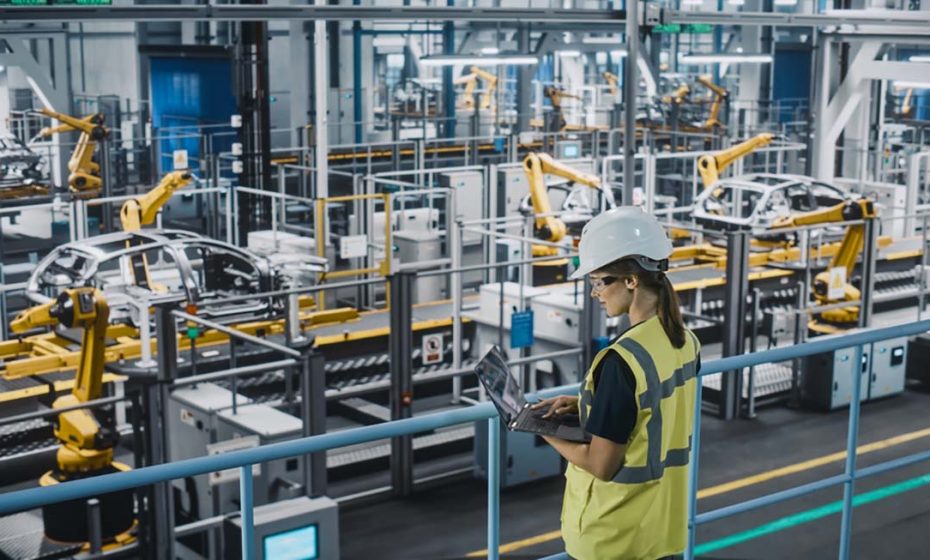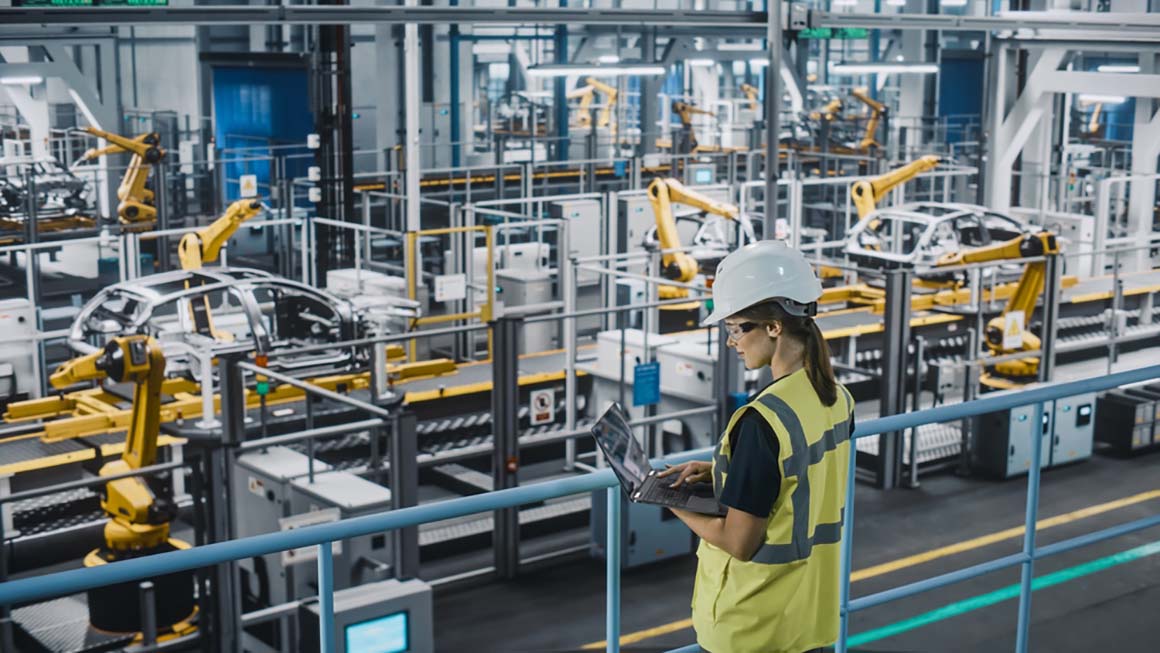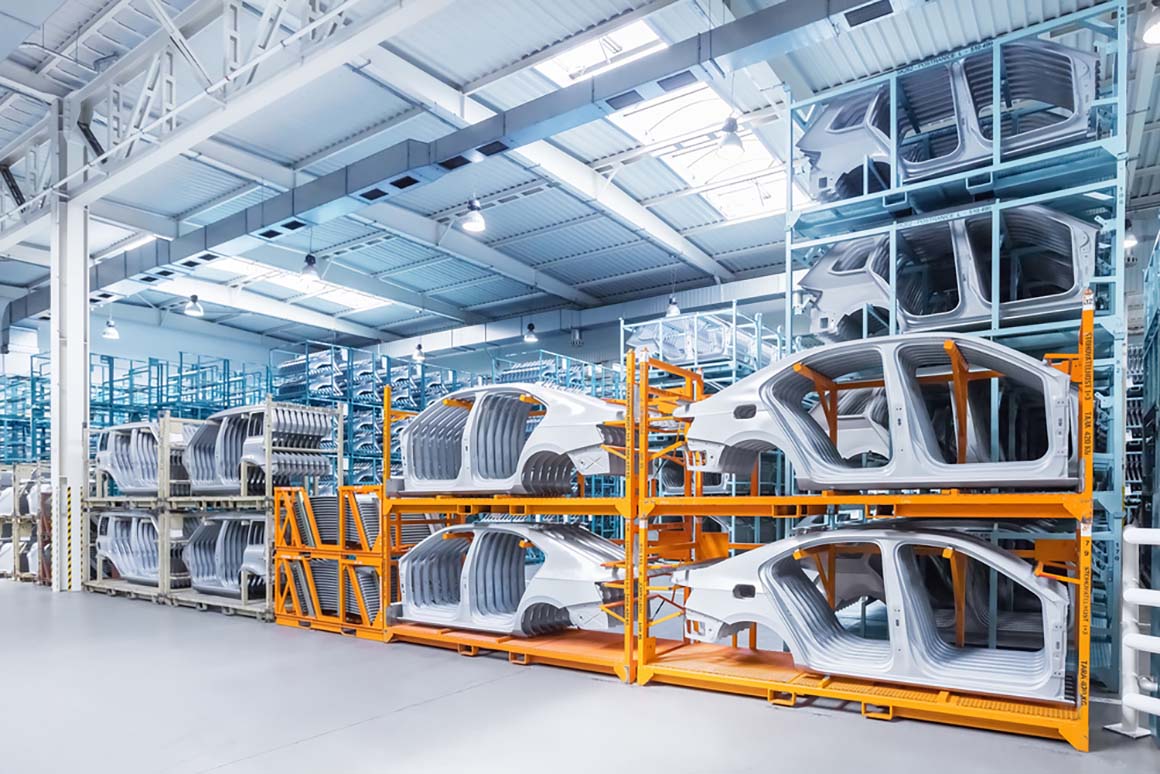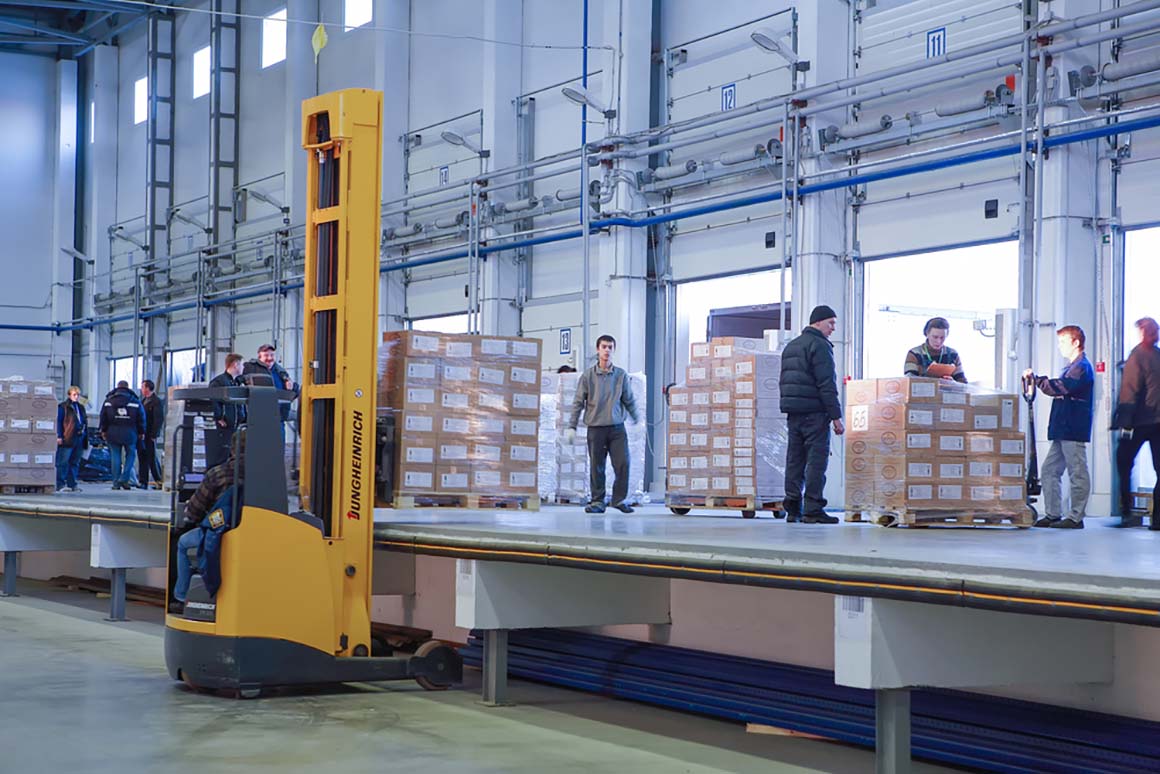Nearly every modern economic sector is information-intensive, but the automotive industry might just take the cake in that regard. Automotive manufacturing companies need thousands of different parts to finish complex manufacturing processes to put high-caliber vehicles on the road. As a result, the automotive supply chain is vital to keeping things going in many parts of the economy.
Additionally, dealerships, mechanics and retail stores all need parts and the means to store them. Container Exchanger can provide bins to store these items, and these bins can then be placed in pallet containers. Getting these parts where they need to be is not a simple undertaking.
Find the Right Pallet Container
Source: Gorodenkoff/shutterstock.com
A Basic Overview
Vehicles contain anywhere from 15,000 to 25,000 moving parts. Those parts come through the automotive supply chain, and the process for all that moves through four primary groups of people. It starts with parts suppliers before moving into manufacturing. Then, it goes to dealerships and eventually, customers.
Among the first group of parts suppliers, things can be broken down into three different levels of suppliers. Third-tier suppliers provide the raw, unfinished materials used for making everything else. Second-tier suppliers make physical components. These components might be used in other things besides cars, such as semiconductors. First-tier suppliers make finished components and parts only intended for automobiles, often with brand-specific applications.
Five Stages to the Process
If you’re an auto parts manager, then it’s not enough to understand the four groups involved with the automotive supply chain. You also need to understand the entire process involved. There are five stages to this.
- The first stage of supply chain management starts with planning. Companies in all four levels of the automotive supply chain apply analytics to match up supplies with assumed or anticipated demand. This must happen before sourcing and even further in advance of making and delivering.
- Sourcing is the second stage. This doesn’t just cover gathering up required raw materials and physical resources. There must also be the identification of vendors and service providers who can turn those unfinished materials into actual automotive pieces and parts.
- Making specific parts for cars and trucks is what happens third. Processing, manufacturing, assembling, packing and testing are all sub-stages of this part of the process.
- Delivery is ideally the final stage, but it’s not always the case. Parts need to be delivered to retailers, mechanics, dealerships and automotive plants.
- Sometimes, the return stage is the final stage. Under ideal circumstances, the only returns are positive feedback and profits. In other situations, parts and even entire vehicles might be subject to recalls and corrections.
Source: Nataliya Hora/shutterstock.com
How to Improve the Supply Chain Process for Your Automotive Business
Even if you don’t think your business is all that big compared to the broader supply chain process in the automotive sector, there are things you can do to expedite this progression. Utilizing integrated technology is a good first step. This type of technology might actually be necessary to look through thousands of parts to keep your own company stocked up.
You’ll need to have a method of data collection to inform logistical planning. Knowing exactly what you have available and where everything is at any given time helps you ascertain quickly when you need to order things and how much. You can also determine when third-party logistics might need to step up and fill certain needs, ranging from delivery to warehousing, where you might store parts in a metal bin with a lid for secure, long-term storage.
Explore Our Metal Bins with Lids
Source: Grigvovan/shutterstock.com
Getting Things Right
When you properly manage your automotive company’s part in the broader supply chain process, you’ll be in a position to reap many benefits. You’ll also need ways to keep all those supplies and parts organized, which is where Container Exchanger comes into play. We have storage and organization solutions for your inventory so you can keep things safe and sorted until you’re ready to use them.
Steady supply chain management will help avoid delays due to missing essential production parts. As a result, your company will become more reliable to customers. You’ll also enjoy better margins and be able to shop around for the best prices.



